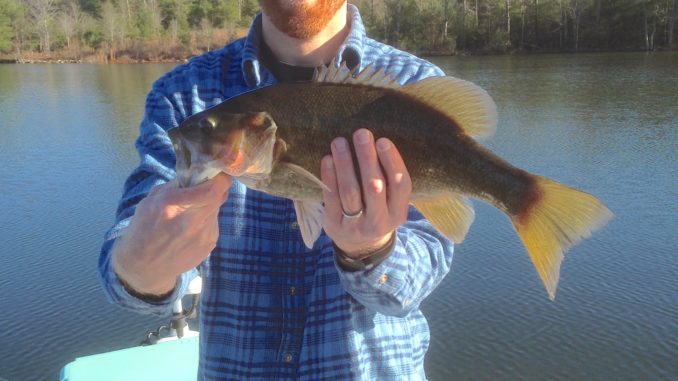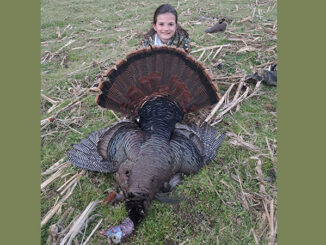
Alewives keep smallmouth bass in depths
Colt Bass of Lenoir has been fishing Lake James since his youth, and he’s seen the mountain reservoir change plenty over the past 10 years.
“With alewives in the lake, the fish no longer move to the shallows to feed,” said Bass, who runs Colt Bass Fishing (www.coltbassfishing.com). “Instead, they pursue alewives in deep, open water, even during the spring.”
Bass said smallmouth move shallow in April, but “shallow” means 15 to 25 feet of water.
“Fishermen who pound rocky banks with crankbaits and jigs in the spring usually go away disappointed and say James is a dead lake, which isn’t true,” Bass said. “James has plenty of 3- to 4-pound smallmouth, but you’re not going to catch them beating the banks.”
The lake’s clear water also keeps the fish deep.
“James is a different animal than most other state waters,” said Bass. “It’s always clear, especially the Linville arm. The Linville River that feeds it has a limestone bottom with little sediment to get stirred up.”
Bass said the most-effective way to catch smallmouth at James is to slow-troll deep, open-water structure using gizzard or threadfin shad.
His gear consists of 7 1/2-foot Ugly Stik rods and and Abu Garcia 6500 reels spooled with 20-pound monofilament and 17-pound fluorocarbon leaders. His spread includes five down rods and two free-lines utilizing planer boards. The down rods with Carolina rigs consisting of egg sinkers, swivels, 4- to 7-foot leaders, and baited circle hooks explore deep water. The two planer boards with free-lines probe shallow water as Bass slow-trolls at less than 1.0 mph.
As expected, the down rods are more productive than the planer boards.
Bass targets deep rocks, brush, humps, extended points and channel edges in the Linville area.
“Years ago, the Linville arm held more smallmouth bass (and) the Catawba arm more largemouth bass,” said Bass. “But tournaments have redistributed the two species throughout the lake. I fish the Linville side because that’s the side I was raised on; I have buddies who were raised on the Catawba side, and they catch as many smallmouth as I do.”
Water temperature is more of a factor than current, according to Bass.
“It takes flood conditions for the lake to generate current,” Bass said. “The smallmouth bite starts when the water temperature reaches 55 degrees and takes off when it ranges from 60 to 65 degrees.”
The thrill of catching smallmouth on top improves on cloudy days. The morning or evening topwater action is sporadic, but keep a rod with a surface lure handy just in case!




Be the first to comment